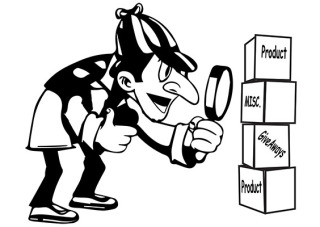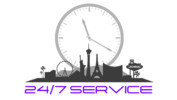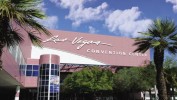Mystery Revealed: Drayage

Mystery Revealed: Drayage and why it’s on everyone’s hot topic list.
If you were to ask any exhibitor or show manager for a list of 5 items that are major concerns about exhibiting at a show, there is 1 topic that always makes the list……DRAYAGE. Can you feel the shudder? Why is it that one of the most vital logistical components of the exhibitor experience is so misunderstood? What is it about drayage and its costs that casts it as such a mystery? And while we’re talking, what the heck does “cwt” mean anyway?
Mystery, secrecy and swirling clouds of fog aren’t really how General Service Contractors (GSC) want to work with their most important asset, (you the exhibitor) yet it sure seems that way when we survey companies participating at B2B events. Lean in, because we are going to pull back the curtain that shrouds this lynchpin ingredient of trade shows………keep reading if you dare.
Simply put, it’s a lot of work,…… trucks, trailers, machinery, equipment, manpower and multiple facilities all tracked by a constant flow of paperwork(“E files” too of course). To refine that overly simplistic answer let’s look at it as “touches” and then the light starts shining. Your shipment has people’s hands all over it multiple times from inception to conclusion of the service…….and you never see that part of a mammoth operation that is surprisingly fluid in its choreography. It’s a lot of moving parts that gets your exhibit materials to you on time.
Material handling and drayage at the most basic level refers to the same thing: the movement of your exhibit items between your carrier’s vehicle and your booth space. This is a highly coordinated effort that is happening behind the scenes that the show general contractor (aka decorator) assesses the charges for this service in two basic ways: Advance Warehouse or Show Site
All drayage rates are based on CWT (weight per 100lbs, in the US) multiplied by an established rate. The General Service Contractors (GSC) bills for drayage by the hundredweight, or CWT (C = the Roman numeral for 100). This means that weight is rounded up to the next hundred pound level (remember, it’s per cwt). Rates vary among cities and facilities based on the cost of labor and cost of production for that city and venue with rates varying by the type of freight being moved as determined by the timing/schedule (ST, OT, on target, off target) and difficulty of handling (based on the piece(s) being handled and the constraints of the facility it is being handled in. That’s a lot of information but let’s bring it back to the simplest answer once again.
Drayage charges are composed of all the behind-the-scenes costs of moving thousands of pounds of freight. The General Service Contractors (GSC) accrues heavy expenses long before the show begins, including rent for warehousing or marshaling-yard space near convention halls and hotels, the personnel who direct the material-handling process at the warehouse or marshaling yard; equipment such as forklifts, dollies, and radios; and union labor to check in the shipments, process the paperwork, drive the forklifts, push the 4 wheel dollies and carts and supervise delivery. And don’t forget the personnel at the service desk who input drayage information and generate invoices and labels for each exhibitor.
As an exhibitor you set your materials on a cross country or local journey and then they magically appear at your booth. The show ends and the crates and cartons are loaded on a truck for outbound shipment back to you and everyone wonders, did I really get good value for what was paid for that service? The answer is an unequivocal YES…it is a good value when you look at all the steps and resources devoted to getting your display and product into your booth and safely back home.
Let’s really break it down now. Getting back to the many “touches” is where we can dig into the multiple processes that need to occur for your fiber case, crate or carton to get to your booth. The great mystery of drayage is surely being revealed as we run-through these many touches. Your exhibit material is received at the General Service Contractors’ (GSC) freight receiving warehouse (or at show site), unloaded and documents are completed to log and track your shipment. The material is then transferred to a trailer that will bring it to show site. Once at show site the shipment is unloaded and delivered to your exhibit space while being piece count verified. After you set-up, your Empty containers are then picked up from your booth, loaded onto trailers that must leave show site and then returned to show site, unloaded and your individual stored empties are returned to your booth. It’s not even a complete service until, your exhibit materials are moved from your booth and loaded onto your designated outbound carrier. If that doesn’t seem like enough work don’t forget to add in that ALL this happens through procedures that make sure the documents tracking custody, control and destination are being updated as it moves through the system.
To help you manage or even reduce your drayage costs here are some easy steps: Skid items as much as possible. Shipping loose pieces is a sure fire way to end up with higher material handling costs. Why? Each shipment is assessed the minimum charge. Consolidate! Whether you ship to the advance warehouse or show site, it is in your best interest to consolidate as much as possible. For ease of mind shipping to the advance warehouse assures your materials are in your booth when you arrive on show site. In some cases shipping to the show site directly will lower your material handling charges because the decorator is handling your freight items less than if they are moving items from an advance warehouse.
Mystery revealed indeed. By the time exhibitors are reviewing their charges at the General Service Contractors (GSC) Exhibitor Service desk, an enormous amount of work has taken place and there are still components and steps to be done. The mystery is that you never see the myriad of work being done by so many people using forklifts, dollies, manual labor and a host of documents being completed and transferred within the General Service Contractors (GSC) workforce. The myth of not getting value in drayage costs is debunked when the intensive work that needs to be done (comprised of a fluid multi step process) is looked at as a whole for all to see.
For further information about the Complete Show Services at Las Vegas Expo that will take the mystery out of Trade Shows, please contact Mitch Isaacs.
Contributed by: Mitch Isaacs – Sales & Marketing Manager, General Contracting Division




